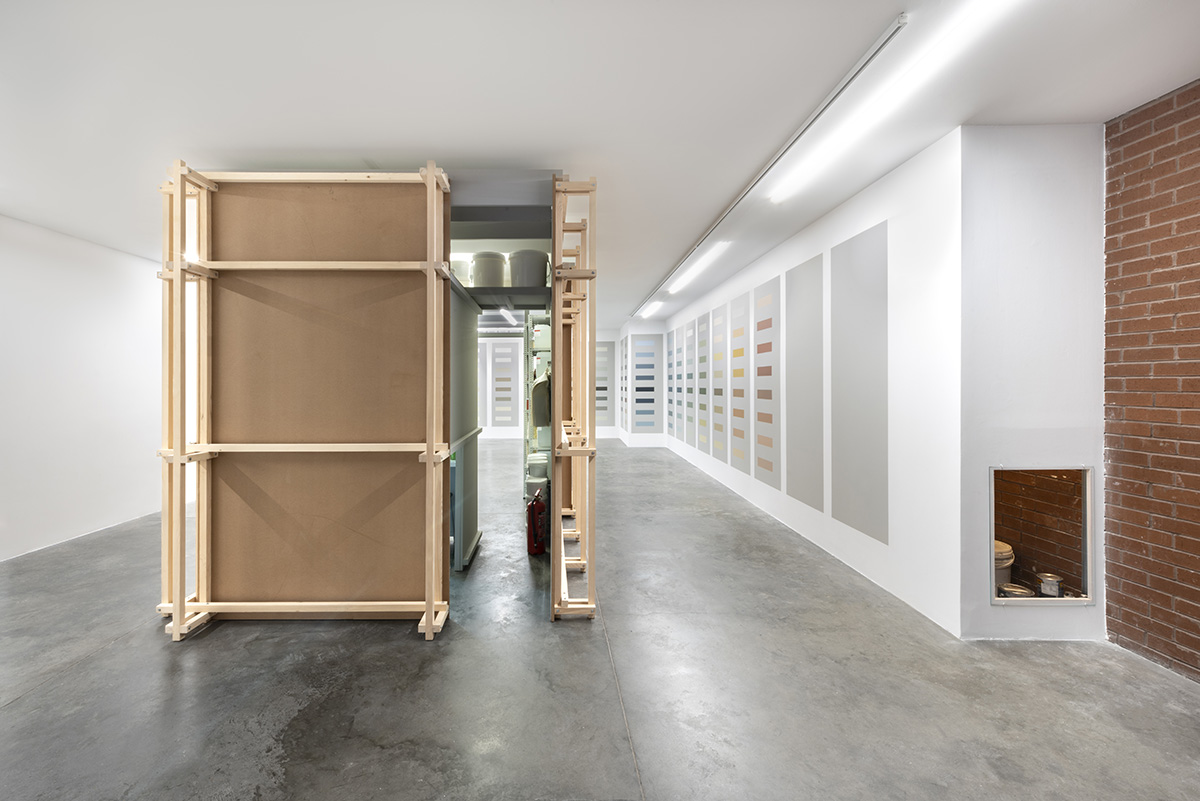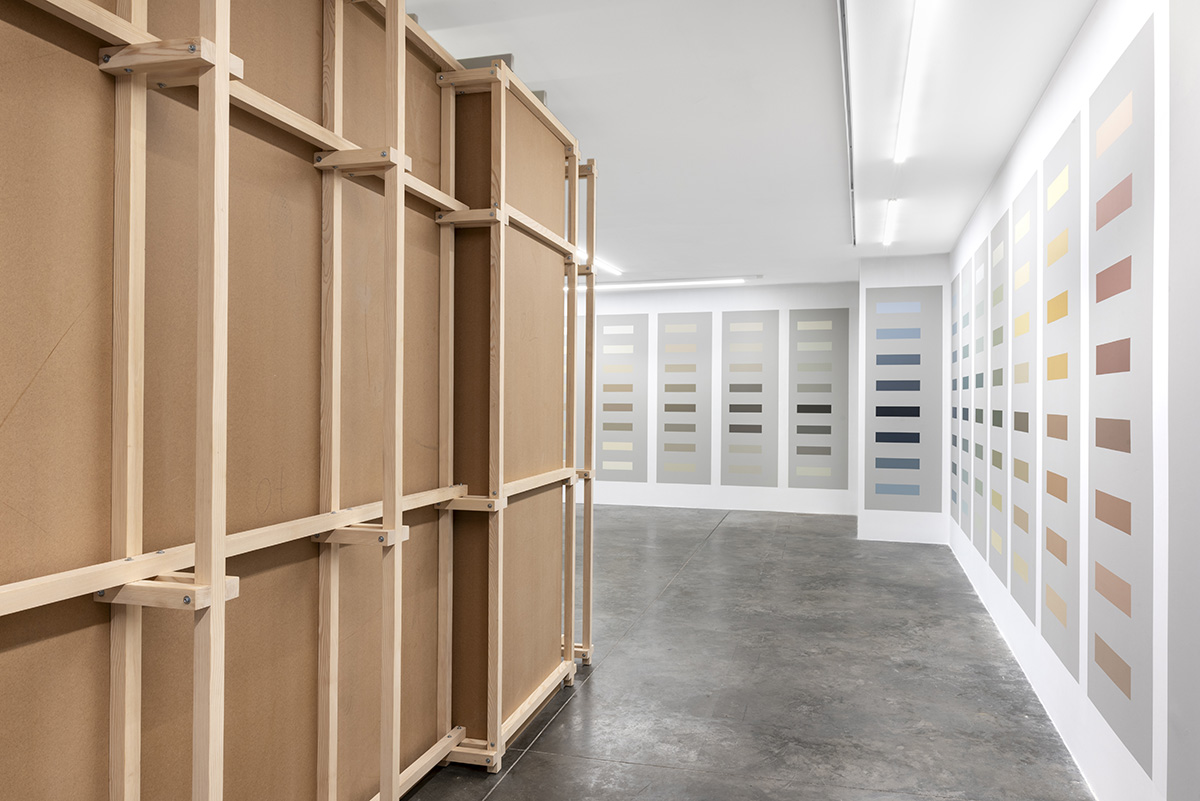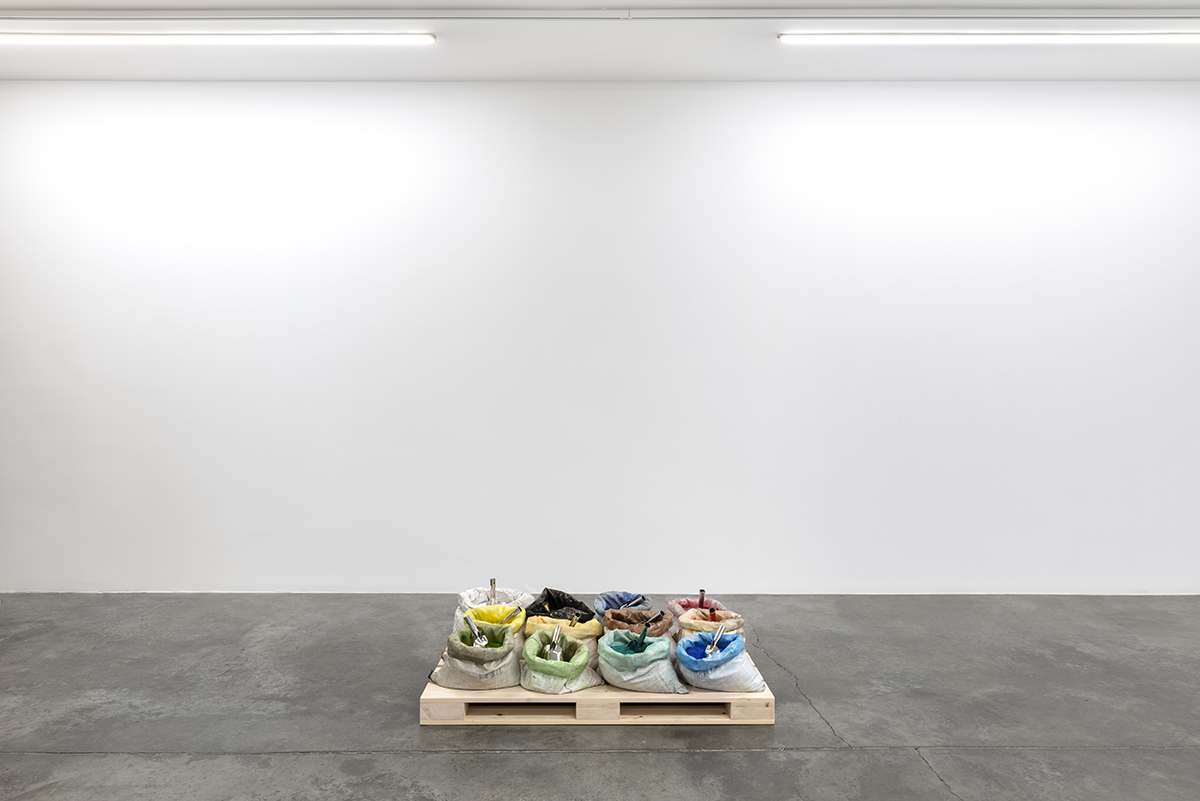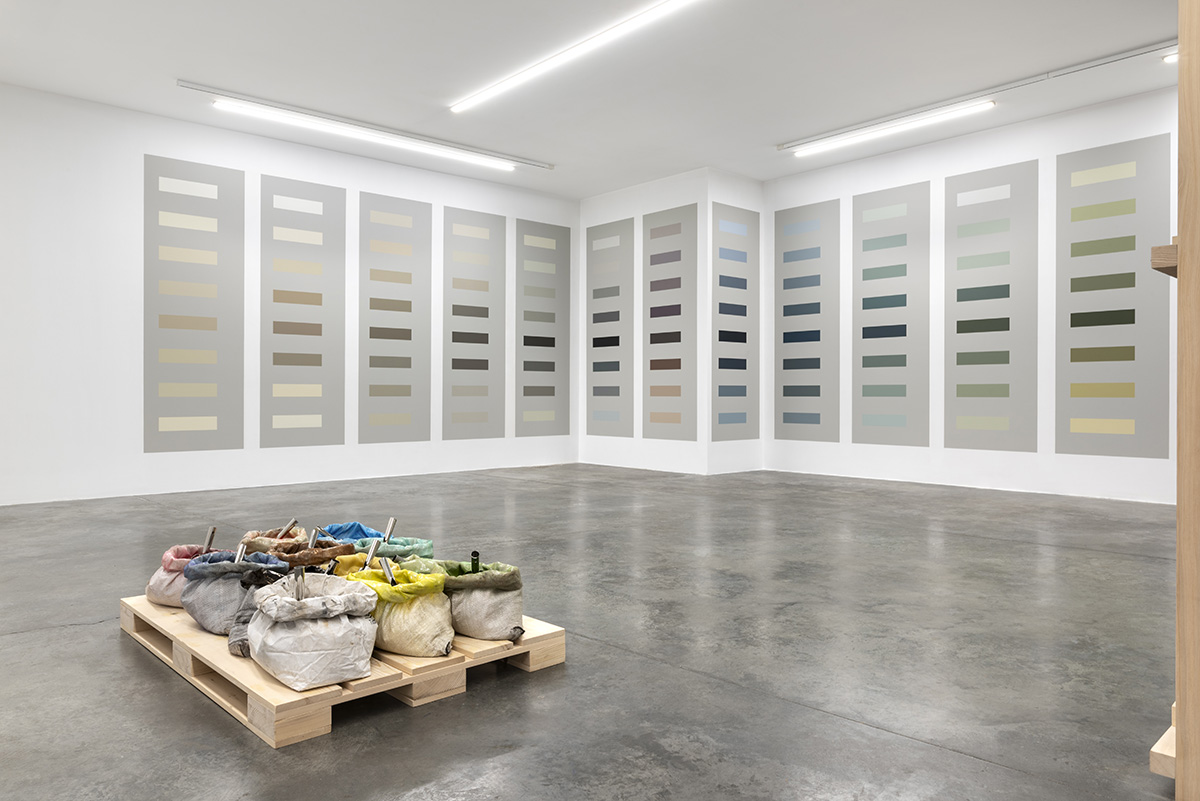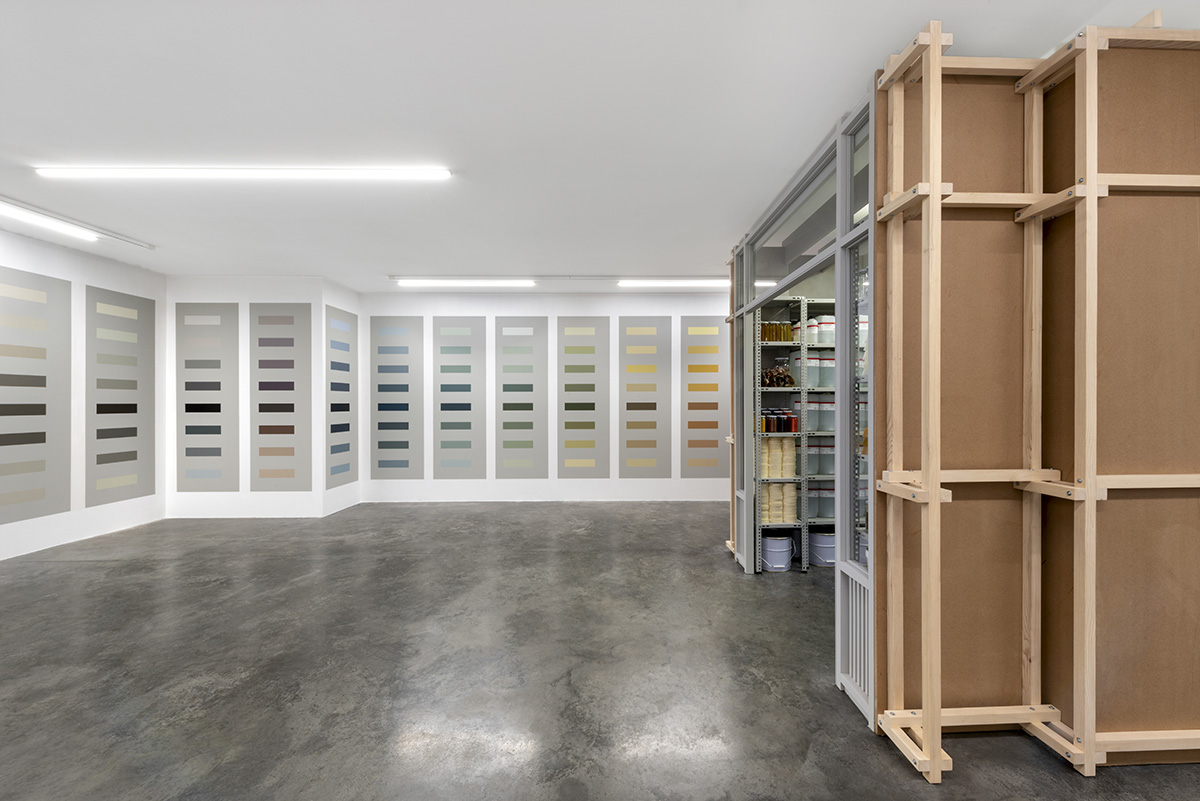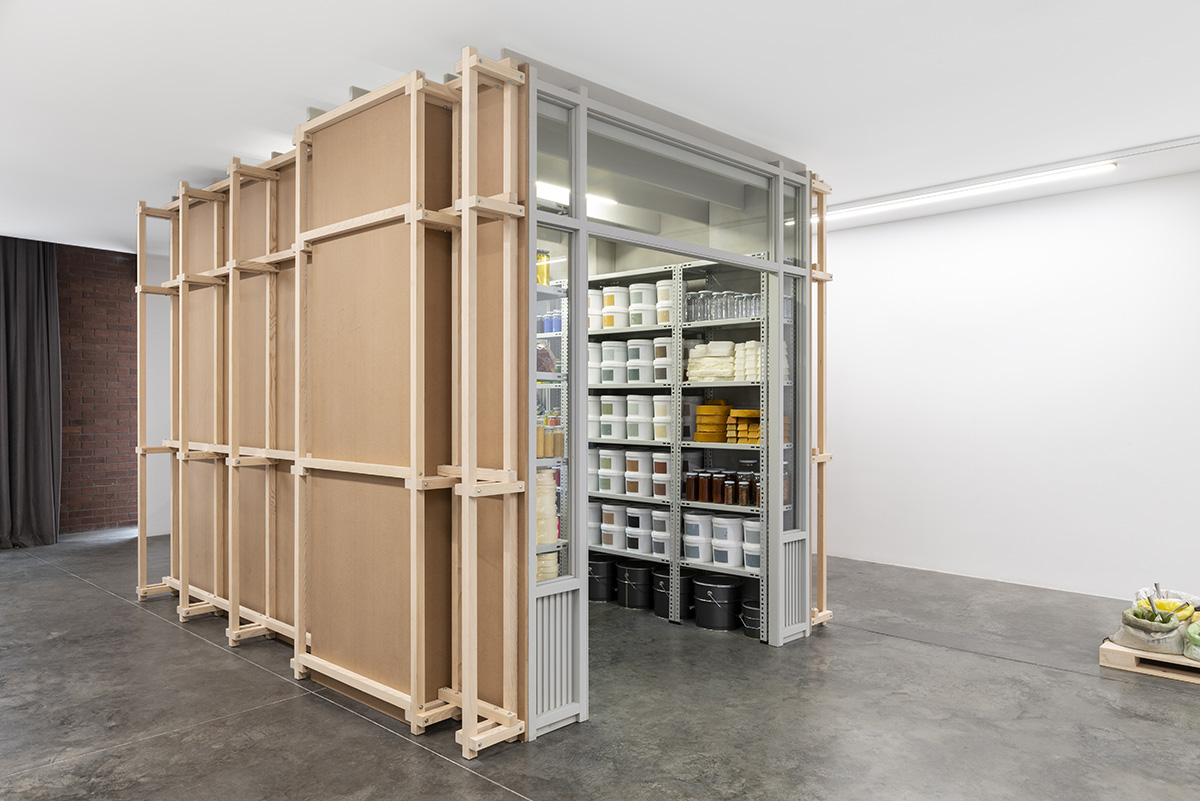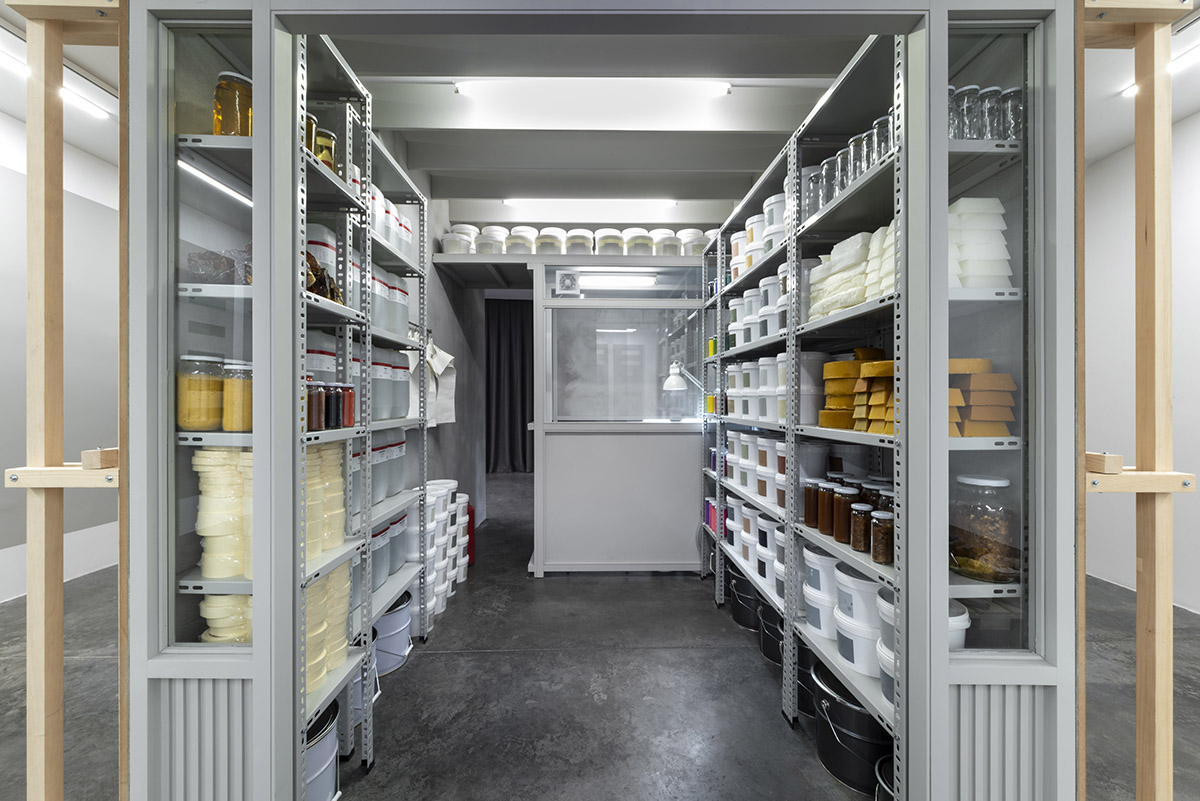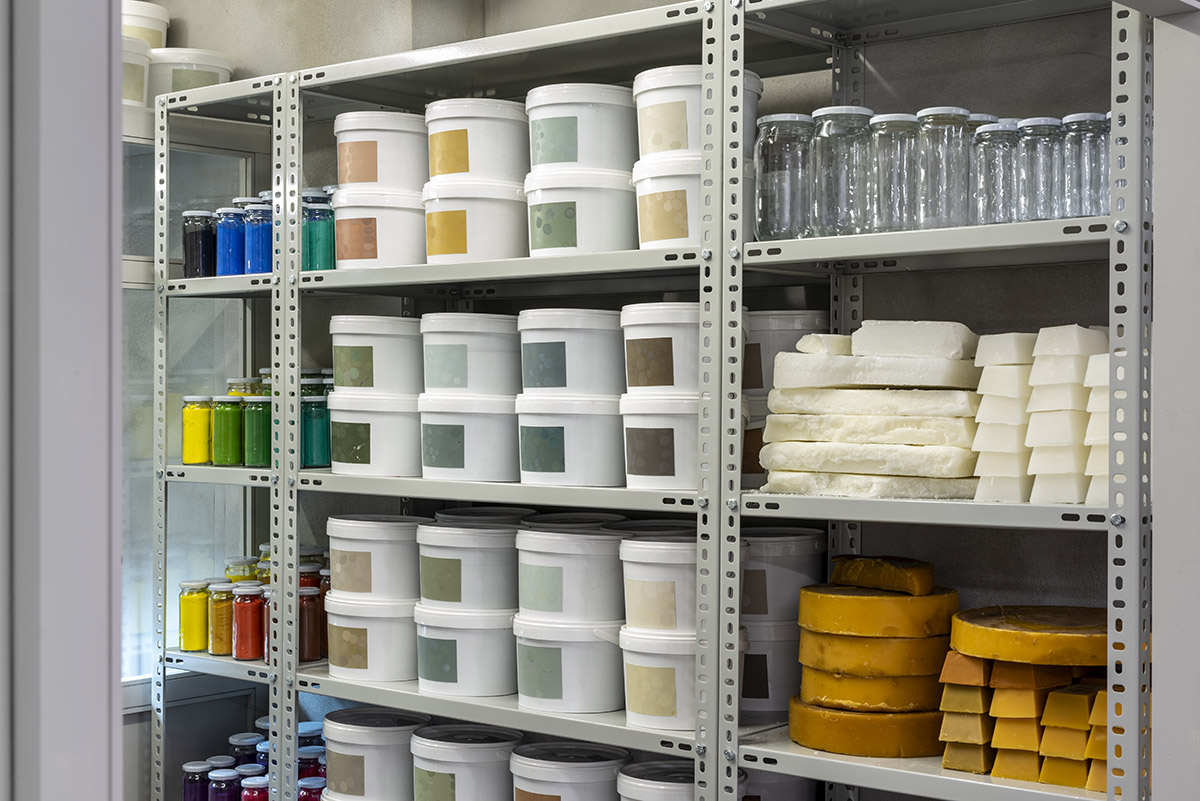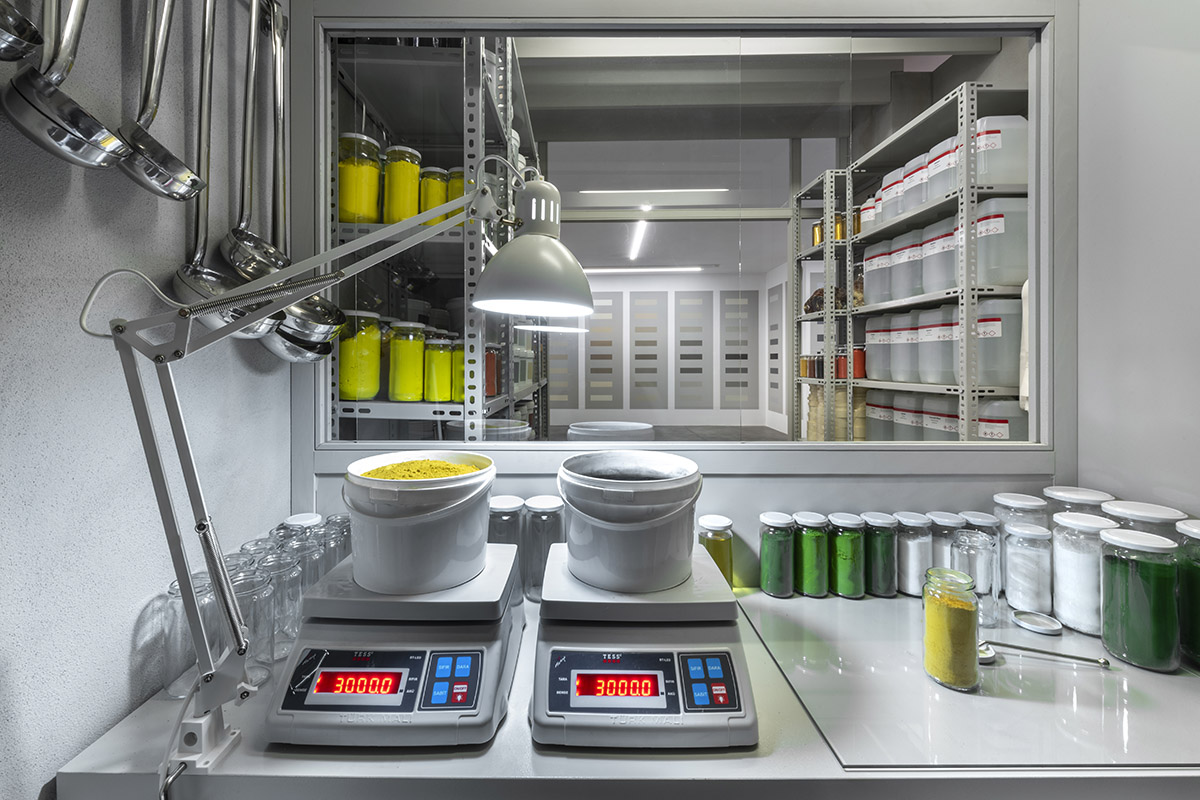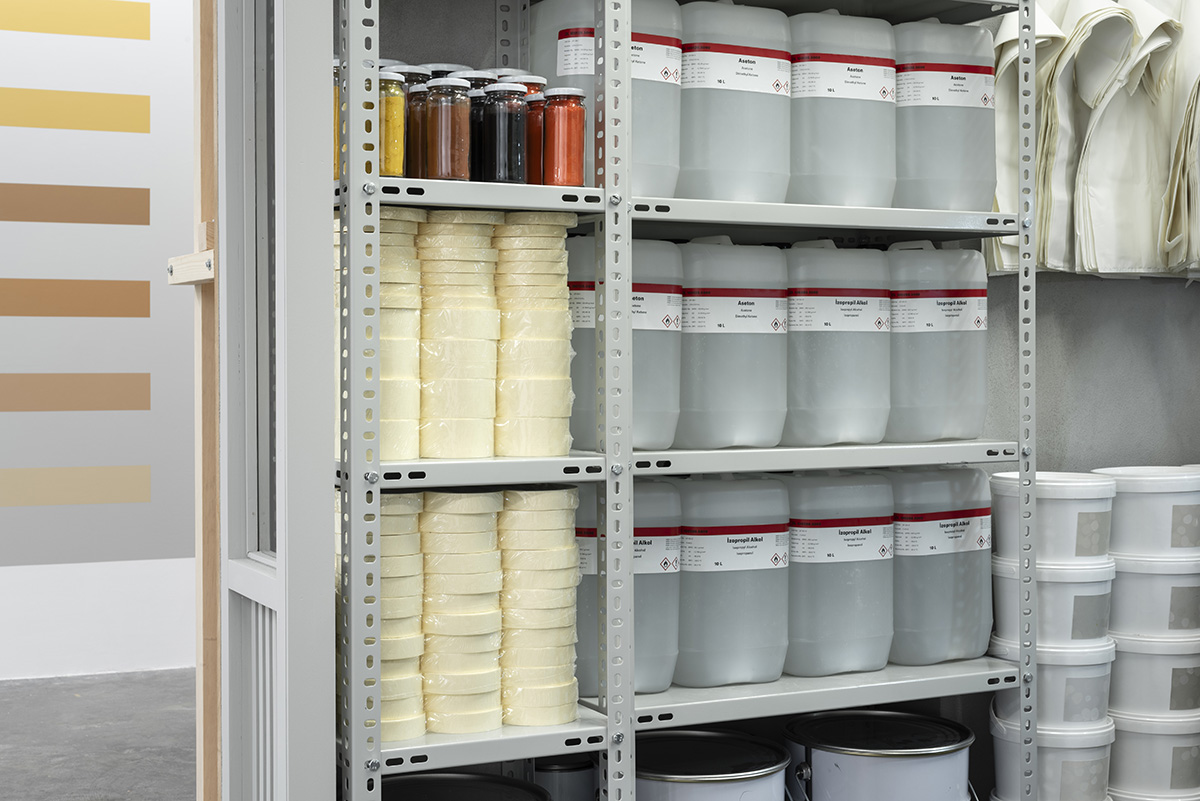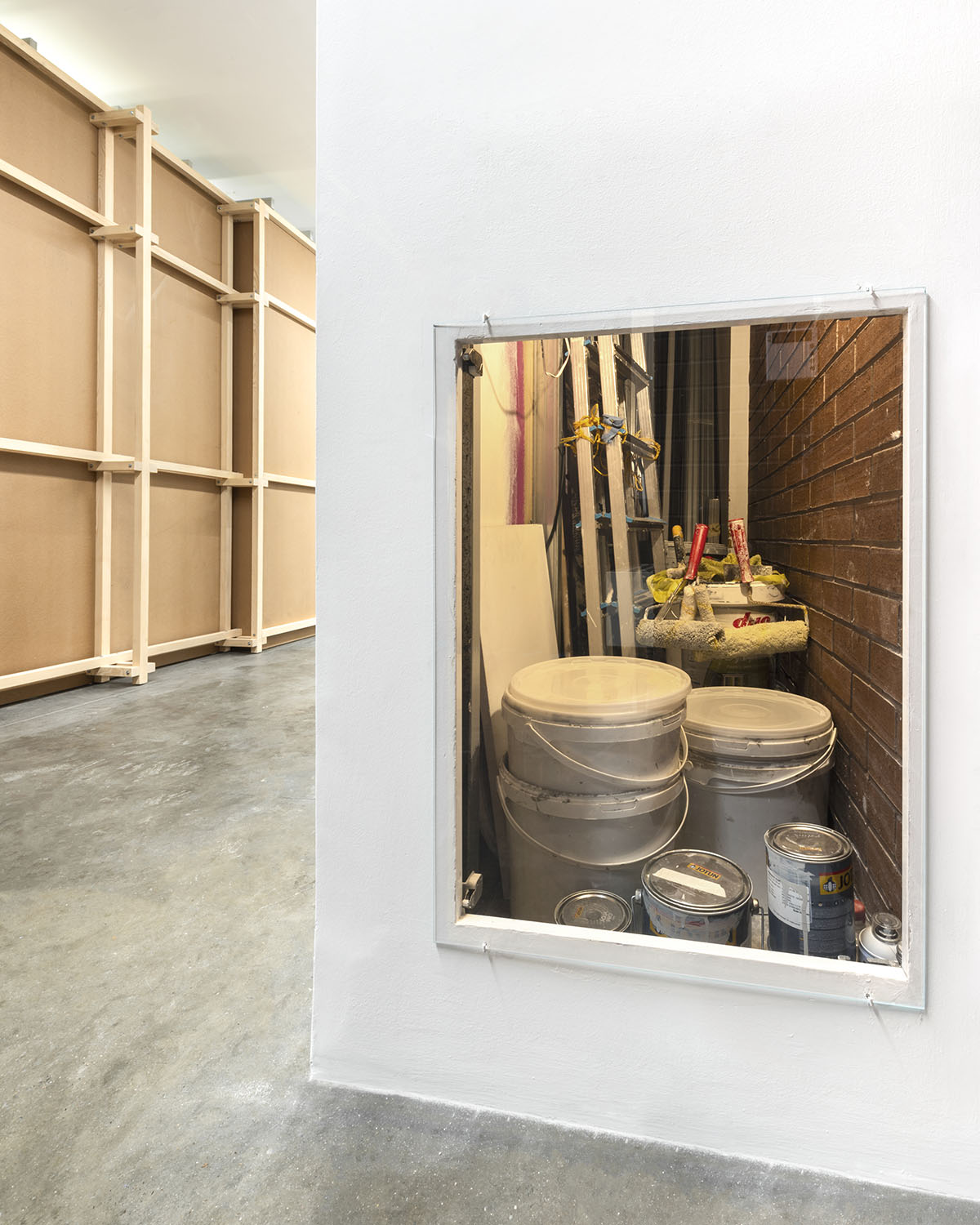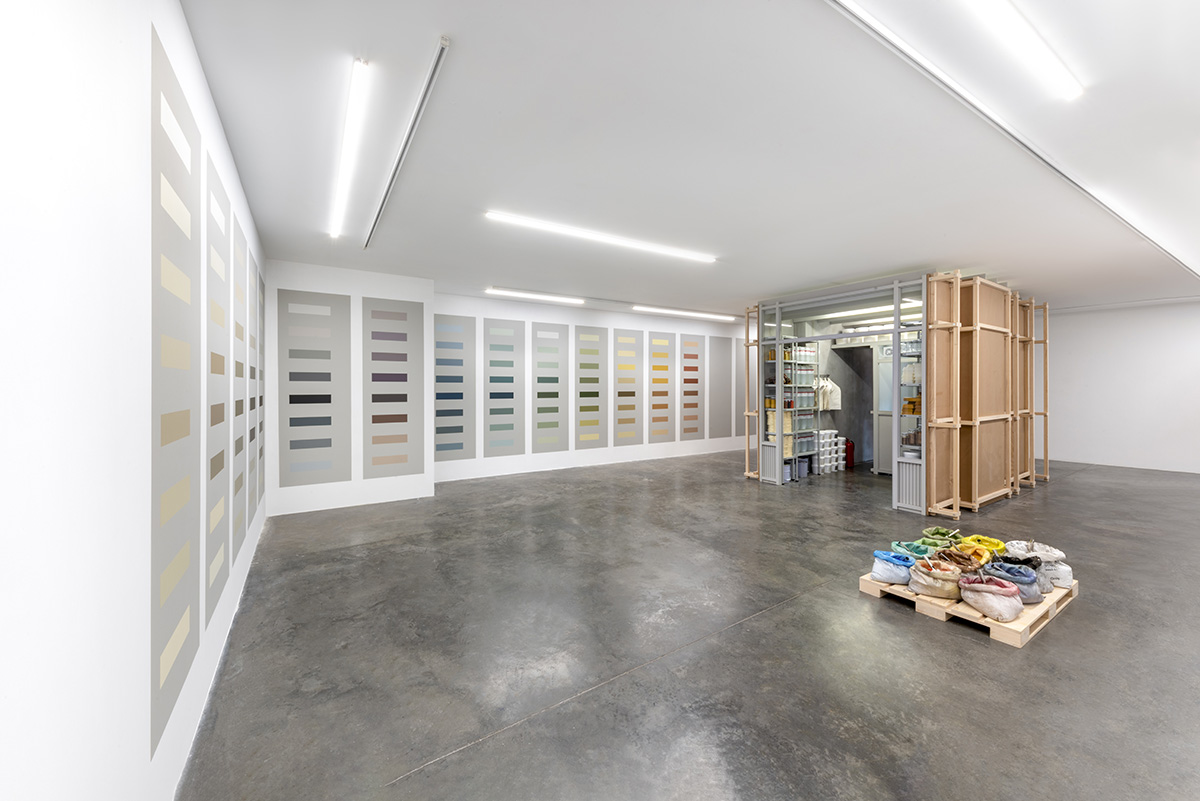PAINTER OR THE MATERIOLOGY OF PAINTING
Oğuz Karayemiş
1. (noun) A person who takes painting as a profession.
2. (noun) A person who makes or sells paint.
3. (noun) Paint store.
Turkish Language Association, “Painter”
Problem I: How do images stand?
Proposition I: There is a materiology that investigates the corporeal dimensions of images in art.
Proposition II: The materiology of painting reveals its links with the ecosystem.
We have been looking at them for centuries but we fail to see them. We are so familiar with them, so adept at ignoring them that it is impossible for them to enter our minds as a thought. I am talking about painting, but not painting as the images we see on the surface of the canvas/wall. I am talking about painting in terms of its corporeal components, that is, the materials that constitute the medium of painting.
What does it mean to look and not see? It signifies the disappearance of the medium of painting, with its paints, brushes, surfaces such as canvas and wall, in favor of the images that form the narrative. We, the spectators, like to talk about the emotions and ideas that paintings evoke in us. But we don’t even think about how they come into being, how they stand. Not only spectators but also critics, theorists and historians deem it suitable to write the history of art as a history of ideas.
We have known for a long enough time that art is a force of thought, that its creation is as much a creation of ideas as philosophy and science. We have learned this deeply from the lessons of conceptual art, so much so that we now apply this lesson not only when thinking about conceptual art and later works, but also when thinking about ancient works, and even cave paintings: Art is an activity of thought. Every work of art is a system of sign, it produces images by organizing signs. All images and their constituent signs are expressions of ideas that ultimately constitute a problematic.
However in art, none of these expressions occur in a void, they always come into being within a medium, through specific materials. In the face of the proliferation of media in contemporary art, especially through installations, the academic discipline of established media such as painting and sculpture may have become destabilized. Perhaps the notion of “installation” in contemporary art is just a shortcut we use for convenience in the face of the fact that the medium has become differentiated almost from work to work. Today, the artist is a medium inventor. They go beyond expressing their ideas in given media and invent new media, they create by discovering new powers of expression in the most unlikely materials. What about ancient media? What about painting?
Here it is, Painter (Boyacı). Painter (Boyacı) is a materiology of painting that has been established for centuries. Yağız Özgen now turns his analytical attention, which throughout his art practice has focused on the logical dimensions of the relations between the world and artistic images, to the corporeal conditions of the pictorial image: pigments (colorants), paints, various chemicals, the stores where they are sold, in other words, the whole assemblage without which painting would not exist.
We definitely like to exaggerate ourselves. When thinking about agency in painting, it strikes us as quite tempting to present the artist, the brain, the thought as the sole agent. However, it is the power of the paints, the pigments and other chemicals that make up the paints, and the brushes that make it possible to organize them in a certain way on surfaces, to take on certain expressions of color fields and figures by holding on to a certain surface. Painting cannot exist without all these materials and their powers. Painting does not per se take place between the perceived world, the brain that organizes perception and translates it into artistic expression, and the images produced on the surface. It also encompasses physiochemical and organic dimensions through pigments and other chemical substances. It entails a huge ecosystemic multiplicity through the bodies of plants, animals and inanimate beings. Pigments, which are specific pieces of nature, are ultimately extracted from this ecosystemic multiplicity and become the material of the painting.
Problem II: How does the painter-artist function?
Proposition III: The functioning of the painter-artist requires at least two different painter functions, which are also their real conditions.
But Painter’s (Boyacı) attack on our familiarity —read “arrogance”— does not end there. Just as the existence and functioning of the pictorial image depends on the power of pigments, different chemicals and brushes, the functioning of the painter-artist depends on the painter. And on two painters: the one who produces paint and the one who sells it. The function of the painter-artist finds its condition in the function of these two painters. In order for painter-artist to implement their ideas on the canvas, paint must be both produced and supplied. Moreover, the painter-artist is by definition a painter, since they too paint this or that surface.

A view from the area where the posters designed by Umut Altıntaş for the “Boyacı(Painter)” exhibition are displayed.
The painter-artist is located at the end of a long sequence of activities: Extracting pigment-containing raw materials from various ecosystems, processing them into pure pigments, mixing the pure pigments with the appropriate chemicals and with each other to produce paints of various colors, all the while traveling through an endless supply network, and finally transforming them into the final product on the shelf of a store. It is at this point that the painter-artist prepares (hopefully for a long time) the paint they have acquired from the painter-seller for its final transformation: into a painting.
Still, it is not about paying a magnanimous tribute, of course. Painter (Boyacı) should be seen as a journey offer: a fugitive stroll through the web of dependency on which creative activity in our societies depends. Dozens of issues might come up here, from the autonomization of art from crafts to industrialization, from over-specialization to functional separation. But Painter (Boyacı) reminds us that against the background of all these autonomizations and separations, new knots are being formed in the network of dependency, and perhaps these knots getting even tighter. The materiology of painting reveals the dependency system of the functions woven around the material.
Problem III: How does a gallery stand?
Proposition IV: Behind the materials for the artworks exhibited/exchanged in galleries are producers and suppliers, and in the case of painting, one of them is paint stores.
A shop in the optical heart of the gallery: a building on this plane, where one might expect a sculpture on a pedestal, now folds an outside of the gallery into the gallery. But what kind of outside is this? Just as the signs open to the paint, the painter-artist to the painter-seller and the painter-producer, the gallery opens to the paint store. The gallery as space-time organized around the work of art (and the artist’s studio as well) is based on shops organized around materials. (Of course, galleries are also based on the function of wall painters, since their walls are repainted with almost every new exhibition.) The fact that galleries and paint shops, as organized space-times, are located in areas of the city that are close to each other despite their separation from each other already emphasizes this phenomenon: The two sides of the coastline in Karaköy separated by the Galata Bridge.
Just as Painter (Boyacı) does not seek to pay a homage to the two painter functions, it is also not a celebration of the existence of the paint stores on which the gallery is based, nor is it a lament for their possible disappearance due to urban transformation. The reconstructed paint store at the heart of the gallery brings the two sides of art together, intertwining the space-times formed around various aspects of artistic performance. With this move, do we, as spectators, not open up to the real conditions of our own spectatorship? In all this effort and frustration, in all this crowd of materials and images, do we not look at the ground on which we set foot? From the cool and dim environments of the shops to the workshops, from the bright environments of the galleries to the pages of the magazines, art is an extremely complex adventure, woven with conflicts as well as compromises.
(One) Conclusion of the Propositions: The components of art always emerge in dependence on other components which are art’s own conditions and gain autonomy through the exercise of their own activity.
Yağız Özgen puts before us a complicated problematic. He extends the problematic of the translation process in his previous works as an artist, that is, the path from the perceived world to the production of the artistic image, towards the corporeal conditions of this activity of translation with Painter (Boyacı). Undoubtedly, art, as a specific activity of thought, gains its autonomy through the creative functioning of its translation, through its ability to establish problematics that go beyond the given and to reveal them through new images. But this activity itself relies on the materials that enable the ideas it produces to stand. The functions that are part of art work thanks to other functions. The space-times organized around it are dependent on other space-times outside it. It is this enormous set of conditions that Painter (Boyacı) opens up before us. Thus, we realize once again that art production requires asking the question “What is art?” repeatedly. Painter (Boyacı) is not only an answer to this question, but also serves as an embodiment of the severity of the question.
